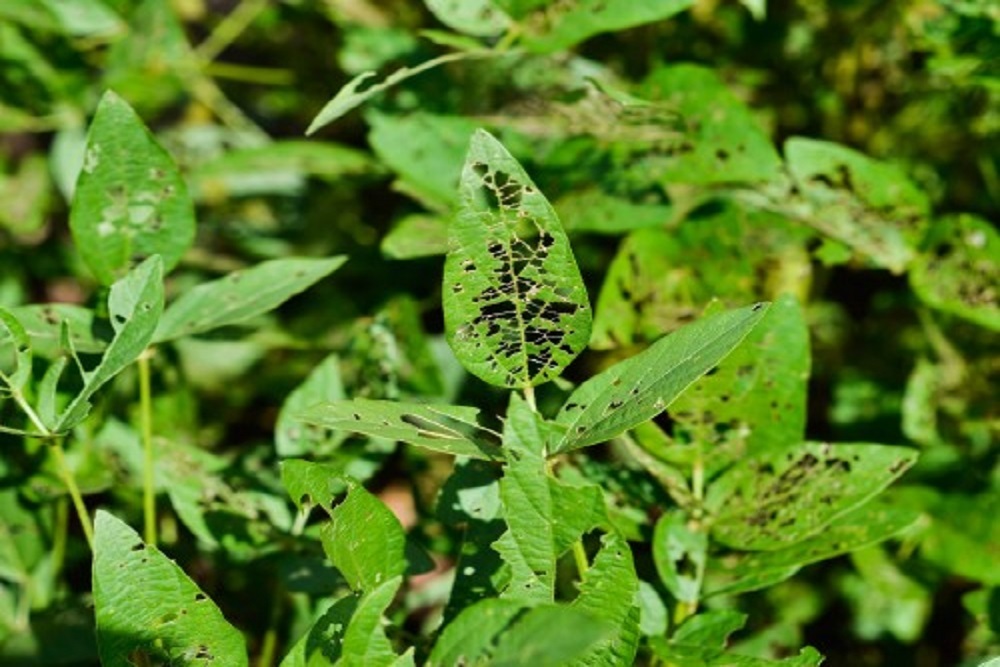Using a combination of drones and machine learning techniques, researchers from The Ohio State University have recently developed a novel method for determining crop health and used it to create a new tool that may aid future farmers.
Published in the journal Computers and Electronics in Agriculture, the study investigates using neural networks to help characterize a crop defoliation, or the widespread loss of leaves on a plant. This destruction can be caused by disease, stress, grazing animals, and more often by infestations of insects and other pests.
If left unchecked, whole crop fields can end up damaged, drastically lowering an entire region’s agricultural productivity. To combat this, researchers chose to analyze a cash crop considered to be one of the four staples of global agriculture: soybeans.
Between August and September of 2020, Zichen Zhang, lead author of the study and a graduate student in computer science and engineering at Ohio State, used an Unmanned Aerial Vehicle (UAV), or a drone, to take aerial images of five soybean fields in Ohio. After cropping each UAV image into smaller images, the team eventually had more than 97,000 photos that they could label either healthy, or defoliated.
“Soybeans are one of the most important agricultural products in the United States, whether it be in exports, or in further food products,” he said. According to the USDA, the United States is the world’s leading soybean producer, and its second-leading exporter. Yet domestic farmers are racing to keep up with the demand: Last year, over 90 million acres of soybean crops were projected to be planted to keep up with consumer needs.
Because soybeans are an important source of oil, food and protein in many areas of the world, a potential drop in U.S. soybean production could have profound consequences. But Zhang’s study, one of the first to employ non-invasive technologies to characterize large-scale crop health, can help assess the likelihood of a drop in production because of defoliation.
“Soybean defoliation is a very typical problem, but it’s one we can address,” said Zhang.
The study was co-authored by Sami Khanal, an assistant professor of food, agricultural and biomedical engineering, Amy Raudenbush, a research associate in entomology, and Kelley Tilmon, an associate professor of entomology, all of which are in the College of Food, Agricultural, and Environmental Sciences (CFAES). This research was supported by the National Science Foundation.
After manually sifting through the collected images, researchers found that about 67,000 of them could be labeled healthy, while almost 30,000 showed varying signs of defoliation, a ratio greater than 2-to-1. Then they used this data set to compare multiple learning algorithms’ ability to correctly infer which crops were defoliated, and to avoid making incorrect assumptions of healthy soybean crops.
But after concluding that none of the learning classifiers could offer the precision they wanted to achieve, the researchers decided to create their own deep learning tool from scratch. This final product is called Defonet, a neural network capable of investigating and answering the study’s original defoliation inquiries correctly. “This new architecture is tailored toward this workload,” Zhang said. “It has better performance than currently available tools in accuracy, precision and efficacy.”
If adopted in the field, Defonet may transform the agriculture industry’s decision-making process in dealing with severe crop losses, according to Christopher Stewart, an associate professor of computer science and engineering, who also co-authored the study.
“In the coming years, we’re going to have to increase food production substantially in order to just meet the demand,” said Stewart. “The idea behind digital agriculture is using computer science and other technologies to make sure that each planted seed is grown as effectively as possible.
Original source can be found here

 Alerts Sign-up
Alerts Sign-up